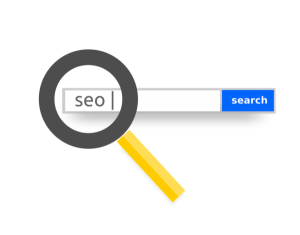
If each person were exactly the same, life would be pretty boring. Individual differences can be the biggest cause of team friction and delays, however, costing time and money and disrupting the content development cycle.
To craft a high level of overall team efficiency, it helps to have a good sense of who you’re working with, and what their natural collaboration styles are.
You can get really technical about how to identify certain personality types in the workplace, but the most important designation is actually how people see themselves.
According to psychologist Albert Bandura, author of Self-Efficacy: The Exercise of Control, “The belief in one’s own capabilities is important for every team member because beliefs influence their course of action, how much effort they put forth, how long they persevere in the face of obstacles and failures, whether their thought patterns are self-hindering, how much stress and depression they experience, and the level of accomplishments they realize.”
How to Maximize Collaboration Efficiency and Maintain a Level of Forward Momentum
Find Your Place on the Team and Own It
Are you the “people person” or the Type A who’s always driving toward a deadline? Or are you more of the idea generator that likes to kick things off, but isn’t as productive when executing detailed plans?
Perhaps you like to stick to the rules rather than look for ways to be innovative. Each of these personality types (and more) come to play in collaboration and impact how efficient your team will be at getting things done.
Acknowledge the Strengths and Weaknesses of Other Collaborators
As part of a team, it’s important to call on your trusty listening and communication skills. Have honest team discussions about roles, communication preferences, and what each person really likes doing vs. hates doing.
In addition, try not to let things like seniority get in the way of assigning tasks. Focus on efficiency first and assign tasks from that mindset.
In the words of Albert Einstein, “Everybody is a genius. But if you judge a fish by its ability to climb a tree, it will live its whole life believing that it is stupid.”
“If you judge a fish by its ability to climb a tree, it will live its whole life believing that it is stupid.” -Einstein
Create a List of Shared Expectations
To be efficient and successful in a collaboration, you need to take ownership of creating a list of shared expectations and goals. This is the foundation that sets the stage for assigning tasks and realistic deadlines, and it keeps the project moving along at a good, consistent pace.
It’s also important to agree on how to have specific people tackle challenges that arise, based on their skillsets and (in)abilities to handle stress.
Agree on a Centralized Project Management System
No matter what industry you’re in, content is being created. It may be material that never leaves the office but influences production, or it could be an important marketing campaign that is public-facing.
Find a way to centralize documents, create an easily accessible timeline of accountability, and provide a way to easily communicate with your team outside of face-to-face meetings, or risk wasting a lot of time and money.
Be Willing to See Differences Between Team Members as Beneficial
In their book Extraordinary Groups: How Ordinary Teams Achieve Amazing Results, Geoffrey Bellman and Kathleen Ryan write, “Extraordinary groups cultivate a positive mindset about differences, choosing to see them as intriguing, informative, and essential—rather than irritating, divisive or threatening.”
This is an opportunity to assess how to get really clear on what each person needs to do their portion of work most effectively.
When you can ask the question “What does this person need from me to make communication most effective?” it makes things clear, reduces friction, and people get what they need to do good work. For a little extra help with understanding coworkers, check out How to Read Your Coworkers’ Personalities on LifeHacker.
“Extraordinary groups cultivate a positive mindset about differences, choosing to see them as intriguing, informative, and essential.”
One of the biggest benefits to collaborating with diverse personalities is the varied skillset each person brings to the table, which makes the team as a whole more efficient.
Knowing how to manage your own perspective—in terms of how you see your team members—can go a long way toward keeping things flowing. It also opens up ways to improve efficiency, while making you happier at work. Now that’s an efficiency boost every team can use!
(193)
Report Post





